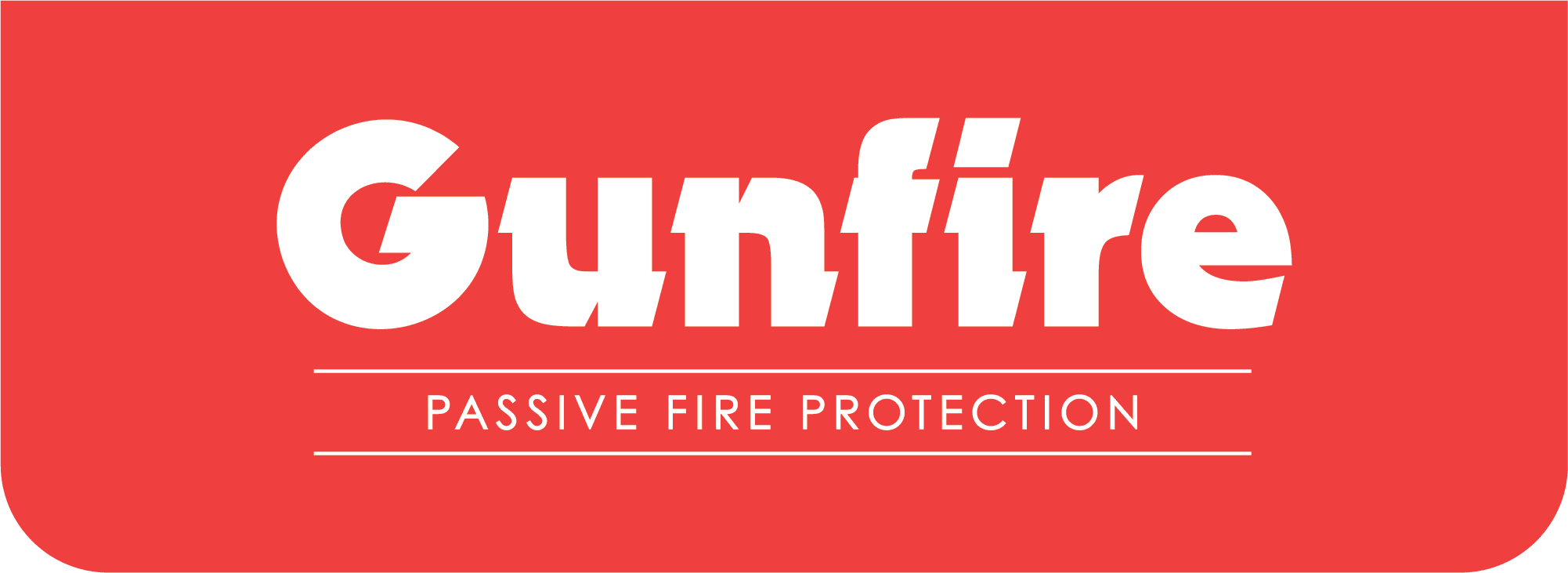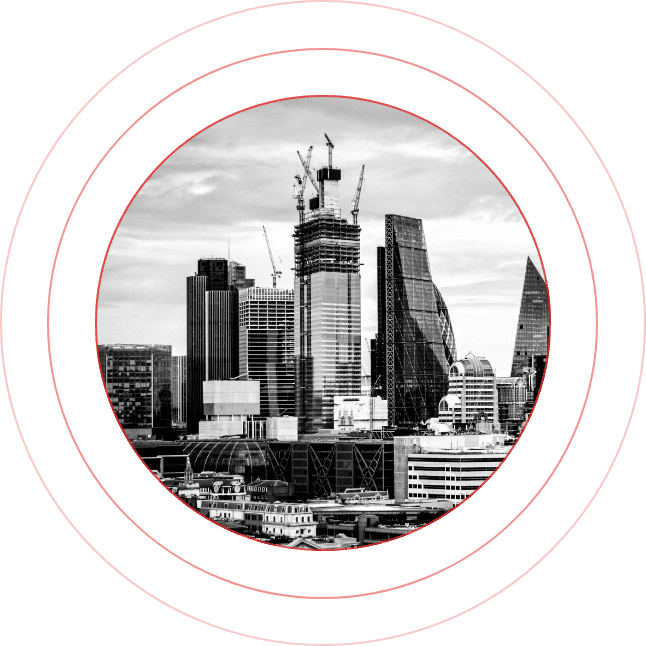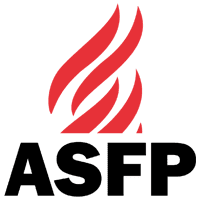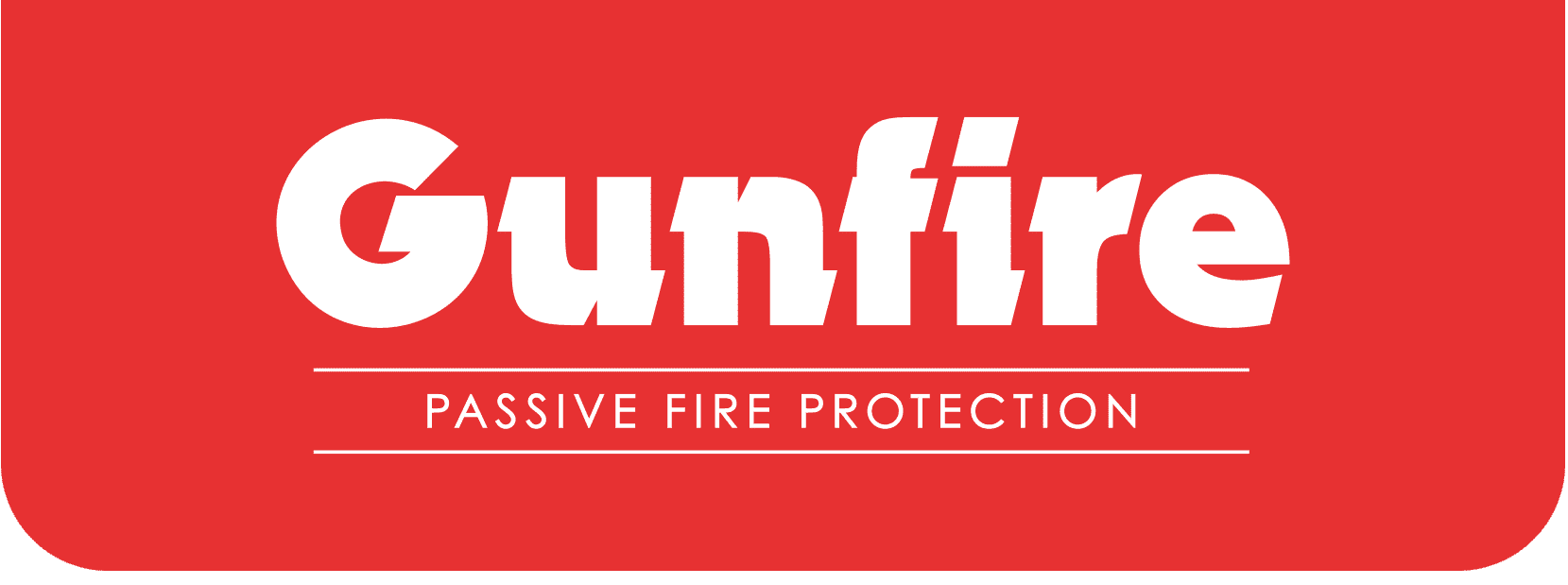What services does Gunfire offer?
Gunfire operates across England with the largest field-based compliance team in the fire-stopping industry. So contact your nearest office in St. Ives, Bury or Nottingham, and we’ll create a bespoke passive fire protection solution for your project, from pre-tender and planning to final handover.
You can learn more about each of these by exploring our service pages. Alternatively, give us a call and we’ll be happy to help.
Gunfire operates across England and has a Head Office in St Ives, Cambridgeshire and offices in Bury and Nottingham.
Passive fire protection refers to the measures taken to prevent the spread of fire and smoke within a building. This includes the use of fire-resistant materials in construction, such as fire-rated walls, floors, and doors. It also involves the installation of firestops, which are barriers that prevent the spread of fire through openings in walls and floors.
Passive fire protection is an essential aspect of building safety, as it helps to contain fires and limit their damage. By using fire-resistant materials and installing firestops, building owners can help protect occupants and minimize property damage in the event of a fire.
Our passive fire protection services include fire and cavity barriers, penetration sealing, and fire door installation and maintenance.
Hey there! If you’re wondering who can install fire doors in the UK, we’ve got you covered.
According to UK regulations, fire doors must be installed by a competent person. This means someone who has the necessary skills, knowledge, and experience to carry out the installation safely and correctly.
At Gunfire, we are Third Party Accredited by BM TRADA Q-Mark and have specialised in the installation and maintenance of fire door sets and screens for over 22 years.
An ablative batt is a high density stonewool board, that has an ablative coating on either one or both sides. It is used in conjunction with intumescent mastic when installed into walls and floors as a fire or air seal. The ablative coating on the board, when in a fire situation, releases a water vapor that cools its surface, unlike the intumescent mastic which expands when heated.
The boards come in 1200mm x 600mm sheets, they are measured and cut on site. Boards are cut with a fixed blade knife (bread knife or similar), and friction fitted (fitted under compression) within the aperture. All edges of the boards are to be “buttered” with intumescent mastic to help the batt adhere to the surface it is fitted within. Batt and Mastic can be installed in several different substrates, rigid and flexible walls as well as floors.
Installers are hamstrung by the material manufacturers tested evidence on how and what they install and certify. Each manufacturer has their own test evidence, so that no 2 manufacturers are the same. In a number of scenarios they will have very similar evidence, but more complex scenarios may require switching the manufacturer to achieve the desired period of fire resistance or undertaking a specific test for what is faced on site. This is more likely on refurbishment projects where the building or access doesn’t allow for the materials to be installed as per the tested detail – and therefore falls outside of certification.
Batt and mastic is the bread and butter for a firestopping contractor. Depending on the manufacturer ablative batts are priced between £15-£25 and a tube of mastic can be £1.50-£2.50.
A building is made up of compartments. Compartments are set out when the building is initially designed, and are areas of the building that are designed to withstand a fire for a designated period of time, to aid people to escape or to protect the buildings whilst the fire brigade enter and deal with the fire. Firestopping is used when there are holes or breaches in the compartmentation, firestopping reinstates the fire resistance of the wall or floor to ensure it maintains its fire resistance.
Fire stopping comes in many forms, there are a lot of different products out there in the market that essentially do the same job. The main materials used by installers will be ablative coated batt and intumescent mastic. This is used in the majority of scenarios, but there can also be compound or mortars for floor penetrations or wall penetrations when the period of fire resistance is high – such as 4hrs.
Firestopping is installed by Operatives who hold a minimum of a Level 2 NVQ in Passive Fire Protection – this gives them a blue skilled workers CSCS card. There are many other training courses out there that operatives, supervisors and managers can do to enhance their competency – such as ASFP, Independent Fire for example.
A building is made up of compartments. Compartments are set out when the building is initially designed, and are areas of the building that are designed to withstand a fire for a designated period of time, to aid people to escape or to protect the buildings whilst the fire brigade enter and deal with the fire. Firestopping is used when there are holes or breaches in the compartmentation, firestopping reinstates the fire resistance of the wall or floor to ensure it maintains its fire resistance.
A building is made up of compartments. Compartments are set out when the building is initially designed, and are areas of the building that are designed to withstand a fire for a designated period of time, to aid people to escape or to protect the buildings whilst the fire brigade enter and deal with the fire. Firestopping is used when there are holes or breaches in the compartmentation, firestopping reinstates the fire resistance of the wall or floor to ensure it maintains its fire resistance.
Up until recently there was not a lot of training within the passive fire protection (PFP) industry, you tend to find operatives were dry lining and ‘did a bit of firestopping’ too. There has been a big effort to formalise training and offer specific qualifications for the different disciplines of PFP; fire stopping, fire doors and intumescent painting (spraying).
In order to obtain a blue skilled worker card, operatives need to undertake an NVQ L2 in PFP. Please always check the back of the cards, or the NVQ certificate to ensure the operative has actually been assessed for modules relevant to PFP and not board work for example.
Gunfire invests a lot into its workforce. We aim to induct labourers and undertake onsite, on the job training and mentoring with our experienced operatives/supervisors with the end product being a fully qualified firestopping operative (NVQ L2) who is then ready to progress through other avenues of training to increase competence and experience. We find this is the best way, as we see a lot less staff turnover and also we are able to maintain quality and minimise any bad habits.
Along with the NVQ L2, our operatives also undertake Working at Height, Asbestos Awareness and Manual Handling training as a minimum and they will hold a DBS check too.
Following completion of their NVQ, operatives are kept with an experienced operative/supervisor until the Supervisor or our Compliance Team deem that operative competent to work individually. We undertake further on the job training through regular visits from our Quality Installation Demonstrator. There is also continued training via material training to ensure all operatives are fully aware of any updated test evidence, product enhancements and new products.
We are more than advise clients on how/what they need to ensure they are compliant or are working towards making their buildings compliant. We do offer free site visits in order to agree a scope of works for our Estimating team to then price. These visits are attended by anyone within the team who can get to site quickest, as we appreciate these matters are usually urgent in nature – so it could be one of our Compliance Managers, Surveyors, Estimators or one of the Operations Team. It will depend on the scope of the enquiry as to who attends, as our team have their specialisms across the passive fire protection spectrum – fire stopping, fire doors, cavity/fire barriers, structural steelwork protection and board works etc.
Our team are very experienced in dealing with client issues and looking for solutions that are both time and cost effective. The team have an extensive knowledge across the industry through experience and training. Gunfire spends approx. £60,000.00 annually on training the team to maintain confidence and competence. Training is provided in Health and Safety, compliance and specific industry training annually, so that our team are as competent as they possibly can be when managing sites and clients.
The team are happy to spend as much time as is needed on this visit to ensure they understand the problems you have, and to make sure you are happy with what they are proposing as a potential solution. We hope to return a quote back to clients, depending on the complexity of the project, within 2 weeks of visiting site. The quote will refer to the site visit and what was discussed, unless a different solution was better suited to the scenario – but this would be communicated throughout the down time between the site visit and quote issue.
It is our aim that you as the client feel that you have been listened to and we have provided sound advice. With our team actively including you throughout the journey of site visit to quote, we hope you enjoy the experience of dealing with us and feel you are doing the right thing in placing your order with us.
Gunfire is there when you need us, we have worked 24hrs a day using shifts and are prepared to do that again, if the project requires.
Office Hours are 0800-1730 Monday to Friday, but we are more than happy to go above and beyond to meet the demand of the project in hand.
Obviously, we value the downtime outside of the office for all the team to relax and recuperate, but the team knows that fire protection waits for nobody and its essential life safety. So if we are needed, we’ll be there.
Firstly, it’s important to understand what fire barriers are. They are walls or partitions designed to prevent the spread of fire and smoke within a building. They can be made of various materials such as gypsum board, concrete, or steel.
Now, to answer the question – whether your building needs fire barriers depends on several factors such as the size and type of building, its occupancy classification, and relevant legislations and Building Regulations.
For example, buildings with high occupancy such as hospitals, schools, and hotels may require fire barriers to protect occupants and contain any potential fires. On the other hand, smaller buildings such as single-family homes may not require them.
Our team can assess the fire strategy of your building and advise on the steps to take to assist you in achieving fire safety compliance.
Linear gap seals are another important fire-stopping element. We use intumescent seals that are flexible and water-resistant and expand when exposed to heat. These seals are typically used where any gaps could provide a route for fire and smoke, for example, in construction movement joints requiring fire stopping.
Gunfire uses fire door sets and screens, front door sets and communal doors from recommended suppliers, including Grady Joinery, Sentry Doors, Dorsuite, and Pendle Doors. We only use the best-quality fire doors so that you can buy with confidence.
Every building has invisible cavities that allow smoke, fire and fumes to spread unseen. Cavity barriers work to seal off any hidden gaps and stop a fire in its tracks. In addition, cavity barriers can minimise heat loss and air leakage between the interior and exterior of a building. Gunfire is an industry leader in the supply and fit of cavity barriers.
Injectaclad is a revolutionary acrylic-based graphic sealant. It restores the fire resistance of wall and floor cavities by sealing linear gaps that would otherwise allow fire and smoke to escape. In addition, Injectaclad can be used with exterior systems without the need to remove large elements of the facade to gain access. This intumescent material expands on contact with heat and is an ideal solution where a retrospective cavity barrier solution is required. At Gunfire, we’re proud to be approved installers for the Injectaclad system.
Yes, we have a large Compliance Team who also undertake compartmentation surveys to ascertain vulnerabilities in the compartmentation of buildings. Comprehensive reports which include photographs, and recommendations for remediation are provided to assist in complying with Building Regulation 38.
Fire doors are the most used (and often abused) fire safety product, so it makes sense to inspect and maintain them regularly. Flat Entrance doors should be inspected at least annually and communal doors at least quarterly.
Gunfire offers a great value inspection and maintenance subscription service to assist our clients in maintaining compliant fire doors.













